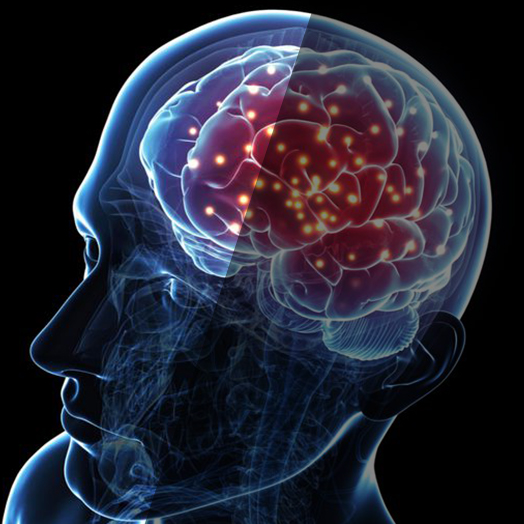Insights on Treating Neck Pain in Your Patients
Written by FMS SFMA
Are your patients with neck pain frustrating you? Not sure which intervention or special test is best? When should you use exercise or manual therapy? Or when should you refer to medical?
Techniques such as dry needling and deep cervical flexor training are popular, but should we apply these for every patient with neck pain? What impairments and risk factors should be considered prior to discharge to reduce recurrence and encourage good MKS health?
Our new online course will answer these questions. This course covers the current best evidence related to the examination and treatment of patients with neck pain from a rehabilitation perspective. It is perfect for any rehabilitation professional who treats patients with neck pain with a variety of medical diagnoses. The course utilizes a research validated category system to confirm you have  chosen the best treatment approach for the patient in front of you. So rather than a one size fits all approach, this course will teach you how to quickly use special testing, signs and symptoms, and objective findings to place your patient into one of 4 Treatment-Based Categories. Once categorized you can easily match the best evidence-based treatment to your patient, and progress through a logical impairment and movement-based program specific to the individualized needs of your patient.
chosen the best treatment approach for the patient in front of you. So rather than a one size fits all approach, this course will teach you how to quickly use special testing, signs and symptoms, and objective findings to place your patient into one of 4 Treatment-Based Categories. Once categorized you can easily match the best evidence-based treatment to your patient, and progress through a logical impairment and movement-based program specific to the individualized needs of your patient.
The next step is to identify major movement impairment risk factors. To accomplish this, we utilize the Selective Functional Movement Assessment.
The SFMA is an individualized movement-based process that identifies the most prominent mobility and motor control impairments in your patient. The SFMA Problems List is addressed in priority while keeping in mind your patients neck pain category.
This process allows you to treat your patient’s neck pain from an evidence-based perspective while addressing major risk factors for MSK health. These can be done simultaneously.

Lastly, we need to consider discharge testing to set our patients up for success. Using evidence-based screening and testing tools, you will capture your patients current MSK status to ensure your home exercise and fitness prescription is targeted at major risk factors to maximize your patient’s MSK health and overall long-term wellness.
Your frustration will disappear, and your outcomes will improve as you classify, treat, progress, and discharge your patient’s with neck pain following this model.
Get started today with Clinical Overview: Functional Movement Systems Approach into the Classification and Management of Patients with Cervical Pain
Description: This online continuing education course is designed for rehabilitation-oriented healthcare providers who treat patients with cervical pain and dysfunction. This course will serve to utilize the current best evidence for patients with cervical pain and integrate the regional interdependence model as evaluated through the Selective Functional Movement Assessment (SFMA). The course will cover primary cervical diagnoses commonly seen in the rehabilitation setting. The course will be based around contemporary classification systems for neck pain and will include demonstration of evidenced-based exam items and most common treatment techniques (manual therapy and therapeutic exercise) for each primary condition covered including discogenic related lesions, cervicogenic headache, facet syndrome, and whiplash associated disorder (WAD). Clinical integration of SFMA findings and progressions to appropriate Functional Movement Systems discharge testing along with strategies to manage musculoskeletal health throughout the lifespan will be covered.
Methods of instruction favor adult learning research including short lectures and case-based integration of the information.
Assessment of learning will be performed through the use of a written exam. Each participant will be required to take the exam and achieve at least an 80% to earn credit for taking this course.
References
- Blanpied, P. R. et al. Neck pain: revision 2017: clinical practice guidelines linked to the international classification of functioning, disability and health from the orthopaedic section of the American Physical Therapy Association. J. Orthop. Sports Phys. Ther. 47, A1–A83 (2017).
- Wainner, R. S. et al. Reliability and diagnostic accuracy of the clinical examination and patient self-report measures for cervical radiculopathy. Spine 28, 52–62 (2003).
- Stiell, I. G. et al. The Canadian C-spine rule versus the NEXUS low-risk criteria in patients with trauma. N. Engl. J. Med. 349, 2510–2518 (2003).
- Cook, C., Roman, M., Stewart, K. M., Leithe, L. G. & Isaacs, R. Reliability and diagnostic accuracy of clinical special tests for myelopathy in patients seen for cervical dysfunction. J. Orthop. Sports Phys. Ther. 39, 172–178 (2009).
- Cook, C. E., Wilhelm, M., Cook, A. E., Petrosino, C. & Isaacs, R. Clinical Tests for Screening and Diagnosis of Cervical Spine Myelopathy: A Systematic Review. Journal of Manipulative and Physiological Therapeutics vol. 34 539–546 (2011).
- Raney, N. H. et al. Development of a clinical prediction rule to identify patients with neck pain likely to benefit from cervical traction and exercise. Eur. Spine J. 18, 382–391 (2009).
- Mansfield, C. J. et al. Systematic review of the diagnostic accuracy, reliability, and safety of the sharp-purser test. J. Man. Manip. Ther. 28, 72–81 (2020).
- Ogince, M., Hall, T., Robinson, K. & Blackmore, A. M. The diagnostic validity of the cervical flexion–rotation test in C1/2-related cervicogenic headache. Man. Ther. 12, 256–262 (2007).
Related Resources
-
Innovation in Manual Therapy
Posted by Gray Cook





